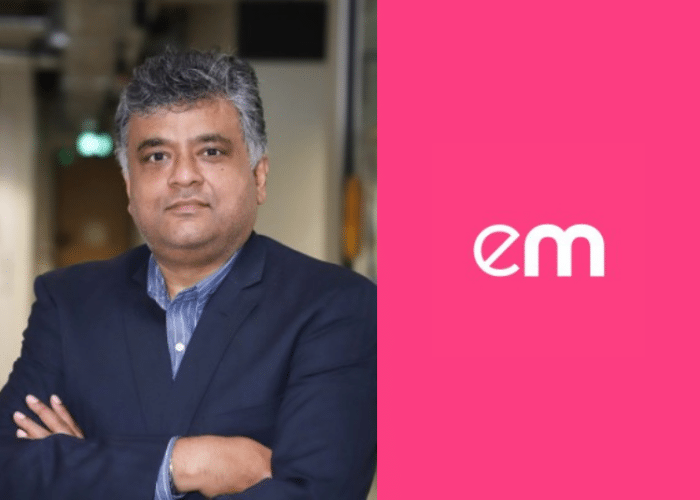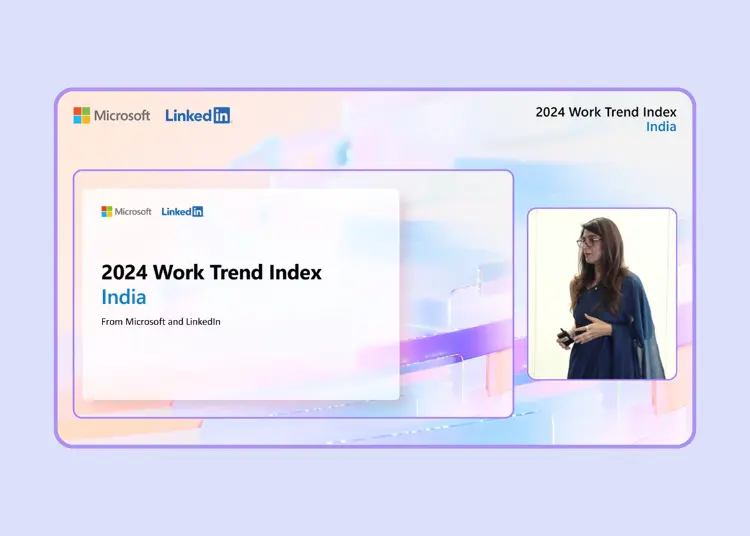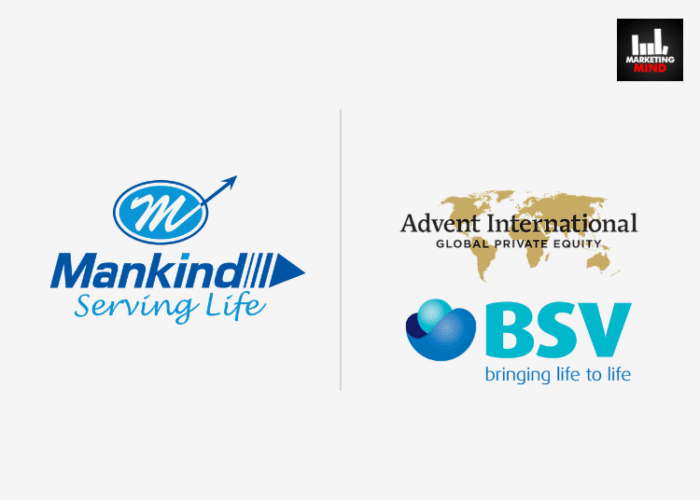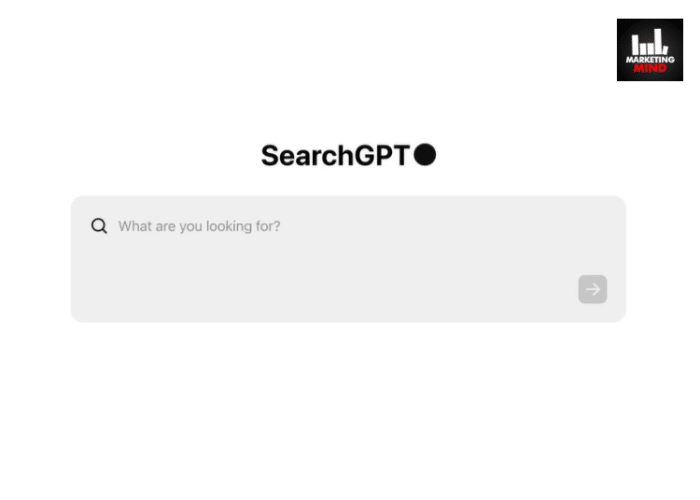The adoption of artificial Intelligence (AI) in India is far ahead of the global scenario with 92% of knowledge workers using the same whilst delving deeper into the key findings and trends, workplaces’ top-to-bottom and bottoms-up approaches for GenAI and more, Shruti Bhatia, Country Head- Modern Work and Surface (India and South Asia), Microsoft, said during the launch of the Microsoft Work Trend Index Annual Report in collaboration with LinkedIn.
She elaborated on how to help leaders and organisations overcome AI inertia, stating that Microsoft and LinkedIn looked at how AI will reshape work and the labour market broadly, surveying 31,000 people across 31 countries, identifying labour and hiring trends from LinkedIn, and analysing trillions of Microsoft 365 productivity signals as well as conducting research with Fortune 500 customers.
Delving further into the key findings, she shared that there were three key insights which stood out from the findings.
Employees want AI at work—and they won’t wait for companies to catch up
They are clear that they want AI at work, and they are not waiting for organizations to support them to move forward. In the last six months, users for GenAI have doubled globally and AI is being integrated into the workplace rapidly.
Furthermore, 75% of knowledge workers use AI at work today worldwide, and 46% of users started using it less than six months ago. In India, that number is 92%. India is far ahead when it comes to embracing new technology and utilising it for our work.
For employees, AI raises the bar and breaks the career ceiling
AI is also beginning to impact the job market. This is the second finding to say that AI is beginning to impact the job market. But this will be in unexpected ways.
Talking about Indian leaders and their beliefs in terms of inculcating AI into the workplace, Bhatia stated that 91% of Indian leaders believe that companies need to adopt AI and around 54% worry that they lack a plan and vision to make that happen. They don’t have a full vision to ensure that they’re able to replicate or link it back to an instant ROI that organisations would like to see.
Moreover, around 75% of leaders would not hire someone without AI skills and 80% of leaders are more likely to hire someone with a less experienced skill set as long as they are well-versed in AI.
Instead of waiting around for organisations to make things happen for them, around 72% of employees are bringing their own AI tools to work and are ready to ensure they are getting their skill set allowing them to embrace it and move forward.
“They have taken this into their own hands instead of waiting for organisations to keep pace. A lot of this was actually to the account of a small mid-size organisation,” Bhatia added.
The rise of AI power users—and what they reveal about the future
In all organisations, there will always be a range of AI users. There are skeptics; people who are least familiar with AI, as they rarely use it, and novices; those who are only somewhat familiar with it. Explorers are those who are only somewhat familiar with it and use it occasionally and power users are people who are familiar with AI and use it more regularly than the others.
Sharing her viewpoint, Bhatia mentioned that some are going to be skeptics who rarely use AI to power users who will be enthusiastic to learn the skill set, explore and move forward quickly. Then, there are going to be certain people in the middle. They will be neither right at the beginning nor not up there. They are still exploring, and understanding. However, the power users are the ones who will define the way things will move forward.
When a power user is being compared to a user who is still understanding the way AI works, there are massive notable gaps in terms of how they look at work and in terms of how they feel and look at the work. There is a distinction between a power user’s feelings about work versus someone who is still in the early stages of adopting AI. Power users will be ahead in terms of productivity and creativity and can get a lot done.
She further stated that 90% of Indian users, who are now power users, start their day with AI. They start it in terms of what needs to be done and what they need to get done by using AI.
On the other hand, 91% of users are preparing for the following day using AI. Whereas, 47% users who are still experimenting with AI are adapting to it by learning new skills all the time. Then 37% of the users ask co-workers about useful prompts to continue learning and trying to figure out how to get better at utilising them.
She explained that the data revealed that it’s not entirely done by the employees but also, that the organisation plays a huge role. While the employees are ahead in terms of how they have adopted AI as a medium, the organisation is ensuring that they can support them in the required training in terms of required communications, conversations, and the whole ecosystem.
She also said that around 90% of these power users are getting the required training within the organisation. She stated that 19% of power users are more likely to receive training. They receive more communication from leadership about GenAI. There is 65% of communication about GenAI coming from the CEO, 34% from the Department Lead and 44% from the Manager’s Manager.
The function leader is doing 34% and the managers are also doing around 44% of that entire communication. So there’s a huge amount of effort and communication and the whole ecosystem is coming together to ensure that the power users are moving forward and are continuing to rub off on the rest of the organisation.
While talking about what this entails for organisations that are still thinking, and approaching and aren’t clear about how to take this forward, she said that according to her, it’s quite simple in three ways. There is a lot of enthusiasm and for enthusiasm to convert into a business transmission, one needs to get a few things in place.
“First, you define a business problem and guarantee that AI can be used to solve it. That may be as easy as a company recognising and addressing a possible issue with how it handles unique experiences. Identifying that separate process and ensuring that AI is applied to it will allow you to observe the impact instantly,” she added.
While talking about how AI can be utilised in the workplace in today’s day and age, she also talked about how the customers at Microsoft are using it as a tool for employee productivity, and custom experience, or they could be plugging in with any app that they may already be running inside the organisation and ensuring that they can apply the plugin to make AI work for them, so, there are various scenarios in every function across load types, and across personas.
The second step is to ensure that one cannot achieve this just from the top down. While this is a lot of communication, it must be done from a cross-top down and the bottom-up approach and needs to be done simultaneously.
Thirdly, It’s about prioritisation of training. She mentioned that although Microsoft has heard about training in those numbers, they have also seen it themselves and amongst their customers. This is important in terms of how one can impart training and ensure that they keep upskilling from there on.
She also mentioned that the Co-Pilot library is another space that one can look at scenario-wise, persona-wise, and a lot of content in terms of how this comes together.
“It’s a pivotal moment for AI, given that we are at high in terms of intensity, in terms of the pace that we want to achieve at work, India even more, and you have seen the numbers how we are ahead of the global trends in terms of adoption. At some point in time, this is the way we look at the pre-PC era and we were always not sure how we were working at that time,” she said.
While talking about the rate of transformation and where AI will take us, she stated that soon, we will no longer be sure as to how to get work done without AI due to the rapid transformation that is taking place. AI is going to help us get more creative and productive, aiding us in getting our jobs done much faster.
Concludingly, she shared that job seekers who are adopting the skillset are at an edge compared to others. It is transformative in various ways and will change every aspect of the work that we do.













